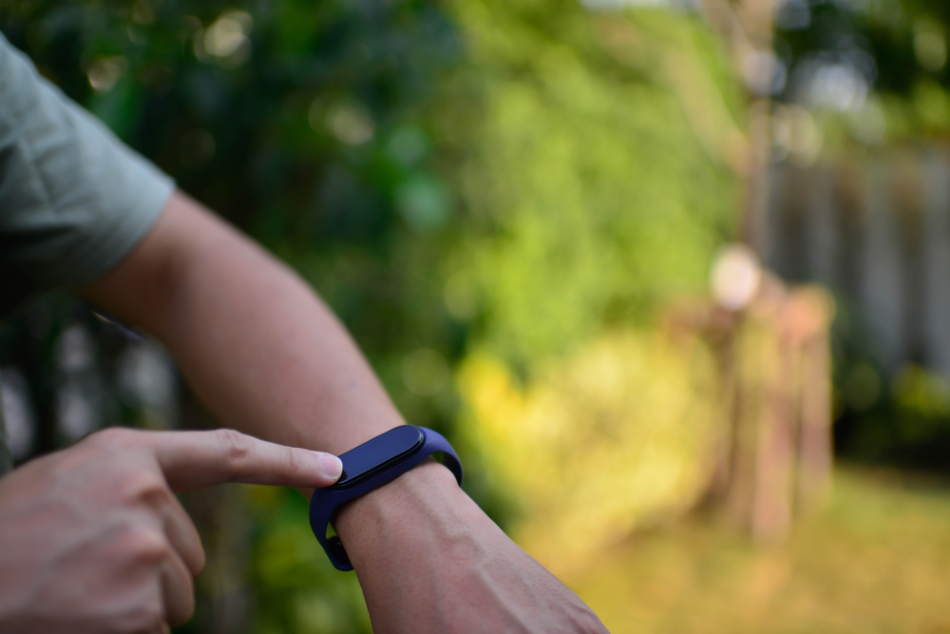Sep 16 2020
Biosensors that are safely used inside the body or wearable on human skin are increasingly used for medical applications and also for everyday health monitoring.

Image Credit: AK Fotos321/Shutterstock.com
A significant part of making this technology better is finding the right kind of materials to bind the sensors together and attach them to surfaces. A new study conducted by Binghamton University, State University of New York has offered a promising solution, particularly for skin applications.
Matthew S. Brown, a fourth-year PhD student with Assistant Professor Ahyeon Koh’s laboratory in the Department of Biomedical Engineering, was the lead author of the study titled “Electronic-ECM: A Permeable Microporous Elastomer for an Advanced Bio-Integrated Continuous Sensing Platform,” and published in the Advanced Materials Technology journal.
The study uses a silicone material—polydimethylsiloxane (PDMS)—which is widely used in biosensors because of its soft mechanics and biocompatibility. It is commonly used as a solid film, nonporous material, which can create issues in sensor breathability and sweat evaporation.
In athletic monitoring, if you have a device on your skin, sweat can build up under that device. That can cause inflammation and also inaccuracies in continuous monitoring applications.
Matthew S. Brown, Study Lead Author and PhD Student, Department of Biomedical Engineering, Binghamton University
In one experiment with electrocardiogram (ECG) analysis, it was revealed that the porous PDMS enabled the evaporation of sweat during exercise and is capable of sustaining a high-resolution signal. On the other hand, the nonporous PDMS did not allow the sweat to evaporate quickly, resulting in a lower signal resolution after exercise.
The researchers developed a porous PDMS material via electrospinning—a production technique that creates nanofibers through the application of electric force.
At the time of mechanical testing, the team learned that this new material behaved similarly to the elastic and collagen fibers of the human epidermis. The novel material could also serve as a dry adhesive for the electronics to robustly attach to the skin, for adhesive-free monitoring. After seven days of use, biocompatibility and viability testing also demonstrated better results when compared to the nonporous PDMS film.
You can use this in a wide variety of applications where you need fluids to passively transfer through the material—such as sweat—to readily evaporate through the device.
Matthew S. Brown, Study Lead Author and Fourth-Year PhD Student, Department of Biomedical Engineering, Binghamton University
Since the permeable structure of the material enables biofluid, small-molecule, and gas diffusion, it can be combined with soft biological tissues such as neural, skin, and cardiac tissue with decreased inflammation at the site of application.
According to Brown, some of the applications include devices that integrate human cells inside implantable electronic devices; breathable electronics for carbon dioxide and oxygen respiratory tracking; electronics for healing long-term, chronic wounds; and real-time, in-vitro biological and chemical monitoring.
Koh—whose latest projects include biomonitoring and sweat-assisted battery power—explained the porous PDMS study as “a cornerstone of my research.”
My lab is very interested in developing a biointegrated sensing system beyond wearable electronics. At the moment, technologies have advanced to develop durable and flexible devices over the past 10 years. But we always want to go even further, to create sensors that can be used in more nonvisible systems that aren't just on the skin.
Ahyeon Koh, Assistant Professor, Department of Biomedical Engineering, Binghamton University
Koh also envisages several possibilities for this porous PDMS material in another stream of research she is currently pursuing with Seokheun Choi, an Associate Professor from the Department of Electrical and Computer Engineering.
At present, Koh and Choi are integrating their strengths to develop stretchable papers for soft bioelectronics, allowing scientists to track physiological statuses.
Journal Reference:
Brown, M, S., et al. (2020) Electronic‐ECM: A Permeable Microporous Elastomer for an Advanced Bio‐Integrated Continuous Sensing Platform. Advanced Materials Technology. doi.org/10.1002/admt.202000242.